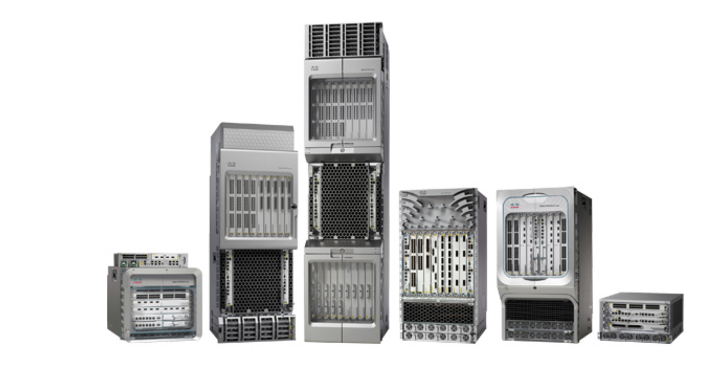The ASR 9000 Series routers are the cornerstone for modern carrier networks. The ASR 9000 Series is designed to grow with your network and business needs—as a modular, high density, power efficient, and secure platform with software virtualization capabilities. Deliver the scale, simplicity, and security your network needs with the ASR 9000 Series.

Features and benefits
- Optimize network performance and reduce complexity
The ASR 9000 delivers a comprehensive feature-set and brings scalable simplicity to the edge; with pay-as-you-grow options, carrier-class reliability, and streamlined service provisioning.
- Automate Network Operations
Take advantage of IOS XR’s feature sets on the ASR 9000 Series with Cisco automation tools, or develop and use your own tools with available APIs.
- Tailor Services for Your Customer’s Needs
Reliably deliver services from a single platform, while providing a customized experience for each of your customer segments.
- Secure Your Network
Integrate carrier-grade security capabilities throughout your network’s infrastructure with Cisco’s latest chip technology. Fortify your overall security posture to deliver peace of mind and help ensure regulatory compliance.
- Protect Your Investment
Ensure the foundation of your network on reliable and scalable platforms, with a modular design, advanced array of interfaces, and the density to keep up with your business needs
Timeless Versatility for Future Growth
Cisco’s Aggregation Service Router 9000 (ASR 9k) has evolved into the cloud-scale, the multi-service platform offering unprecedented flexibility, scale, programmability and security for Service Providers today.
When the ASR 9k was first announced in November 2008, it was a 6-slot and a 10-slot chassis—each of them capable of handling 3.2Tbps and 6.4Tbps of traffic, respectively.
Over the past nine years, it transitioned from 10GE to 40GE and most recently to 100GE connectivity as speed and scale required to handle bandwidth growth continues to be challenged. Current shipping line cards support up to 12 100GE-ports, bringing the total capacity of the higher range chassis up to 48Tbps.



















































































































